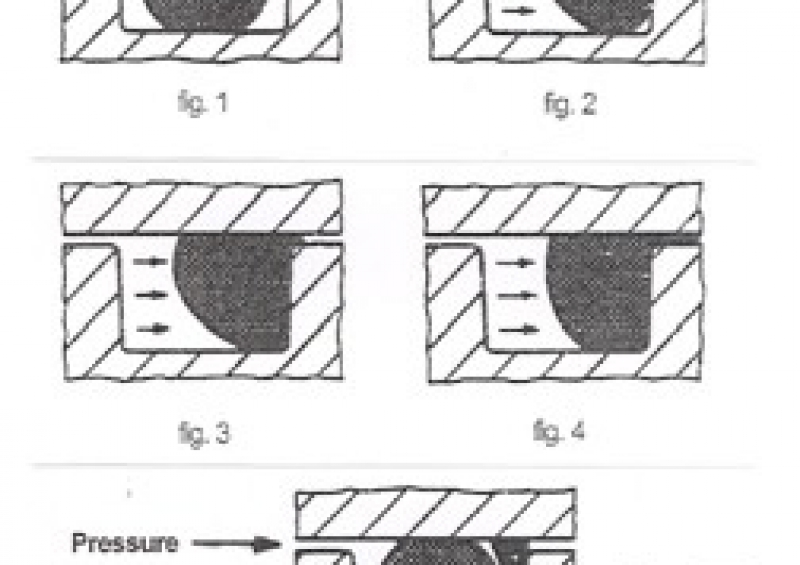


The cross section of an O-Ring is deformed diametrically on fitting and all irregularities in the faces are evened out by resilience (fig. 1). Under the pressure of medium, the O-Ring is deformed in the direction of the gap between the parts, thereby improving the effect (fig. 2). When certain limiting conditions are reached, the O-Ring is pressed into the gap (fig. 3). If pressure increases further, the O-Ring is destroyed by extrusion (fig. 4). The “extrusion” is significantly dependent upon the pressure level, the size of the gap between the two faces and the hardness of the O-Ring. To restrict extrusion, a Back-up ring is used (fig. 5)